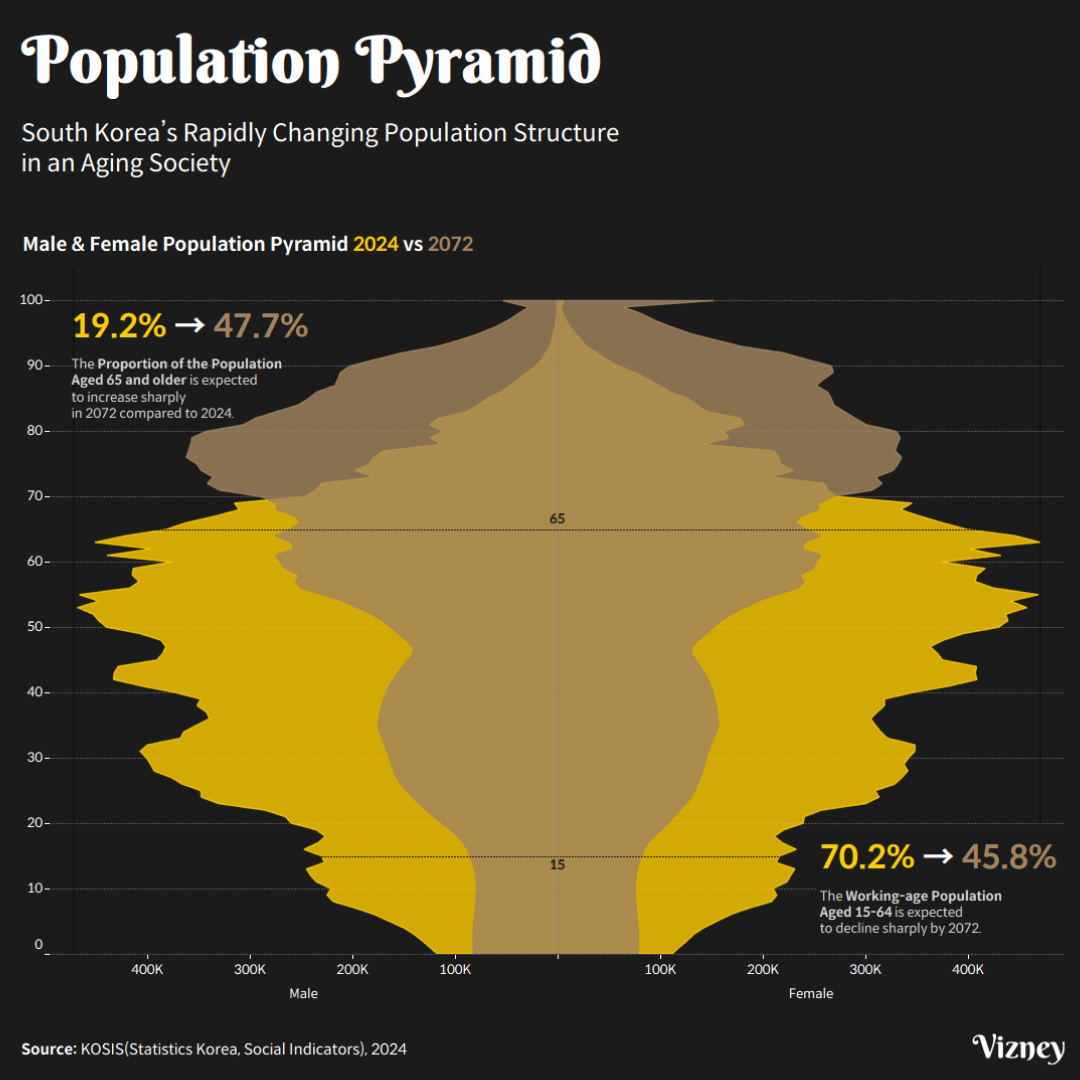South Korea's Population Structure is Rapidly Changing due to an Aging Society
South Korea’s population is declining after peaking at 51.75 million in 2024. With rapid aging, nearly half the population will be 65 or older by 2072, posing major challenges for the economy, labor, and welfare.

Aging Acceleration and Population Decline
- Total Population in 2024: 51.75 million
- Projected Total Population in 2072: 36.22 million (Over 30% decrease)
- Proportion of Elderly Population (65+): 19.2% (2024) → 47.7% (2072)
- Proportion of Working-Age Population (15–64): 70.2% (2024) → 45.8% (2072)
South Korea's population is expected to decline continuously from 2024 onward. By 2072, nearly half of the population is projected to be aged 65 or older, while the working-age population will shrink to nearly half of its current proportion. This demographic shift is likely to exacerbate issues such as pension sustainability, welfare demands, and labor shortages.
Regional Population Changes
- Population in the Capital Region (Seoul, Gyeonggi, Incheon): 26.3 million (50.8% of the total)
- The only region expected to see population growth by 2052: Sejong City
The population continues to be concentrated in Seoul and Gyeonggi Province, while regional areas are experiencing noticeable declines. Sejong City is expected to be the only region with population growth, driven by administrative relocations and ongoing urban development.
Challenges Ahead
- Strengthening Aging Policies: Pension reform, expansion of elderly welfare and healthcare services
- Addressing Labor Shortages: Encouraging economic participation among the elderly, implementing foreign labor policies
- Promoting Regional Development: Revitalizing local economies through industrial investment and improving living conditions
Over the next 50 years, South Korea will undergo a dramatic demographic transformation. The rapid aging of the population will be a crucial issue affecting all aspects of society. To navigate these challenges, long-term policy planning and broad social consensus will be essential.

